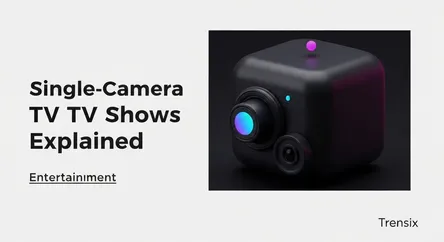Entertainment
Single-Camera TV Shows Explained

Discover the single-camera setup, the filmmaking technique behind your favorite cinematic TV comedies and dramas that offers a film-like experience.
What is it?
The single-camera setup is a production method where scenes are shot with one camera at a time. Each angle and shot is filmed individually and then edited together in post-production. This is the standard technique for feature films and is used in acclaimed TV shows like The Office, Fleabag, and Breaking Bad. Unlike the multi-camera setup, which simultaneously captures a scene from multiple angles in front of a live audience (like a classic sitcom), the single-camera format allows for more precise lighting, framing, and shooting on location, resulting in a more polished and cinematic look.
Why is it trending?
The single-camera format's popularity has surged with the rise of streaming platforms and "prestige TV." It gives creators immense artistic control, enabling sophisticated visual storytelling, nuanced performances, and seamless blending of comedic and dramatic tones. This technique breaks free from the static, stage-play feel of traditional sitcoms, offering a more immersive and high-quality viewing experience that modern audiences have come to expect. It's the go-to choice for showrunners aiming for a premium, film-like aesthetic for their series.
How does it affect people?
For viewers, the single-camera style fosters a more intimate and engaging experience. The absence of a laugh track allows for more subtle humor and emotional depth, trusting the audience to react organically. The dynamic editing and cinematography pull viewers directly into the story's world, blurring the lines between television and film. This has fundamentally shifted audience expectations, raising the bar for production quality and contributing to a greater appreciation for television as a powerful storytelling medium.